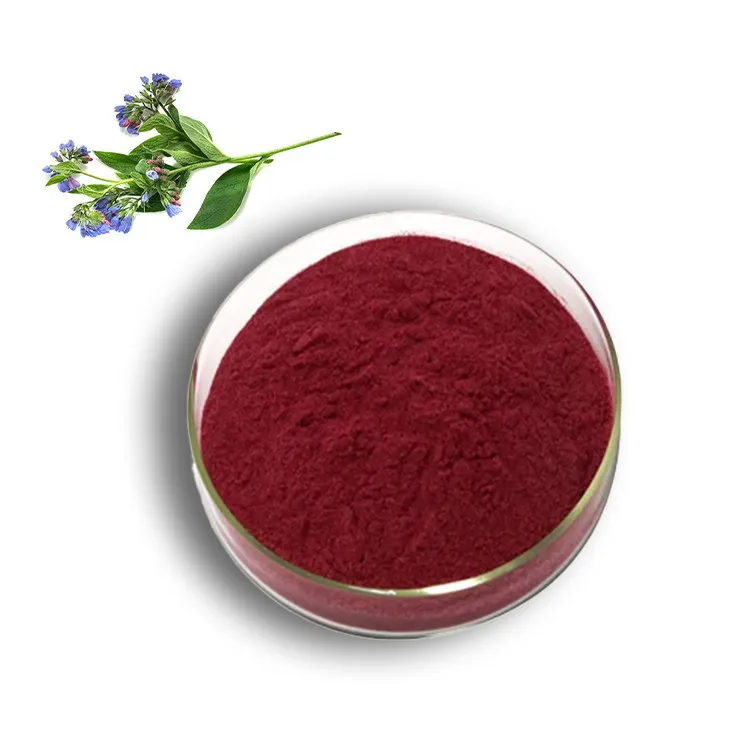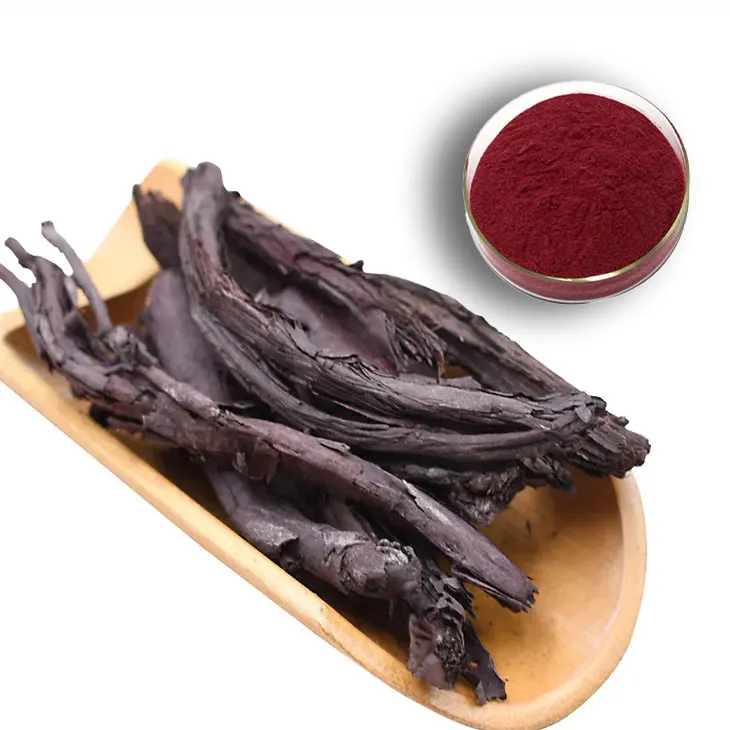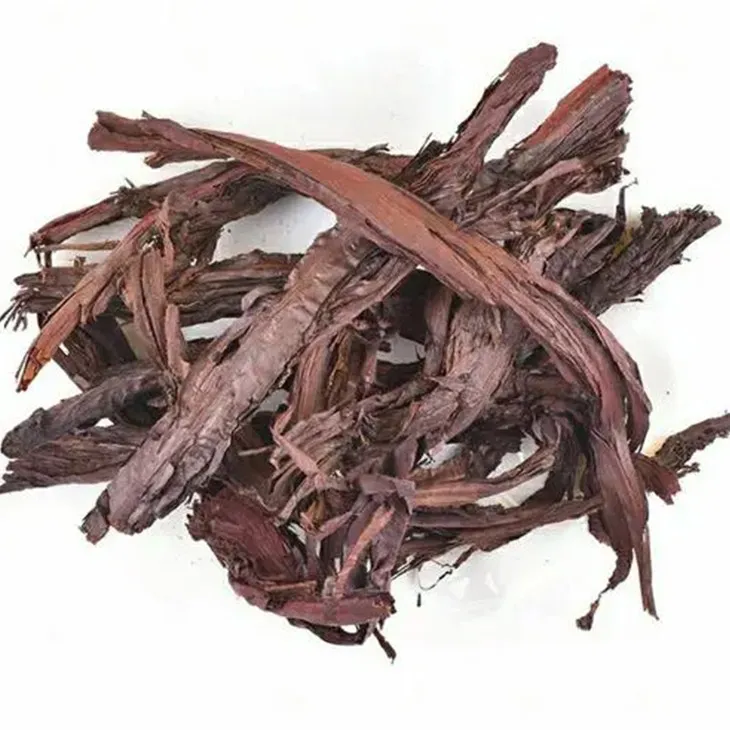- 0086-571-85302990
- sales@greenskybio.com
The best natural source of shikonin.
2024-11-28

1. Introduction to Shikonin
Shikonin is a remarkable bioactive compound that has attracted significant attention in various fields, including medicine, cosmetics, and pharmacology. It possesses a wide range of biological activities such as anti - inflammatory, antibacterial, and antioxidant properties. Due to these beneficial qualities, the demand for Shikonin has been steadily increasing. However, to ensure a sustainable supply of high - quality shikonin, it is crucial to identify and preserve the best natural source.

2. Onosma Paniculatum: A Prominent Source
Among the various natural sources of shikonin, Onosma paniculatum stands out as an excellent candidate. This plant species is known for its relatively high shikonin content. It is a plant that has adapted to specific ecological conditions, which play a role in the production of shikonin.
2.1 Ecological Habitat
Onosma paniculatum typically grows in arid and semi - arid regions. These regions are characterized by harsh environmental conditions, including limited water availability, high temperature fluctuations, and often nutrient - poor soils. The plant has evolved to survive in such challenging environments. One of the ways it has adapted is by producing shikonin as a part of its self - protection mechanism.
2.2 The Role of the Harsh Environment
The harsh environment in which Onosma paniculatum thrives serves as a driving force for shikonin production. Shikonin may help the plant in several ways. For example, it could act as a natural defense against herbivores, as its bitter taste and potential toxicity may deter animals from feeding on the plant. Additionally, shikonin may also protect the plant from certain environmental stresses, such as UV radiation or microbial attacks. This self - protection mechanism not only benefits the plant but also presents an opportunity for humans to obtain this valuable compound.

3. Chemical Composition of Shikonin in Onosma Paniculatum
The shikonin obtained from Onosma paniculatum has a unique chemical composition. It exists in specific isomeric forms, which can have different biological activities.
3.1 Isomeric Forms and Their Significance
Different isomeric forms of shikonin may interact differently with biological targets. For instance, some isomers may have stronger anti - inflammatory effects, while others may be more effective as antibacterial agents. Understanding these differences is crucial for the development of shikonin - based products. It allows for more targeted applications in medicine and other industries. Moreover, the presence of specific isomers in Onosma paniculatum - derived shikonin may also contribute to the overall quality and efficacy of the compound.

4. Extraction Process of Shikonin from Onosma Paniculatum
The extraction of shikonin from Onosma paniculatum is a complex process that requires careful consideration to preserve the integrity of the compound.
4.1 Challenges in the Extraction Process
One of the main challenges is to avoid degradation of shikonin during extraction. Since shikonin is a sensitive compound, factors such as temperature, pH, and the use of solvents can all affect its stability. For example, high temperatures may cause the breakdown of shikonin into less active compounds. Additionally, the choice of solvent is crucial, as some solvents may interact unfavorably with shikonin, leading to a loss of its biological activity.
4.2 Optimizing the Extraction Process
To ensure a high - quality extraction, researchers need to optimize the extraction process. This may involve careful selection of extraction methods, such as solvent extraction, supercritical fluid extraction, or microwave - assisted extraction. Each method has its own advantages and disadvantages, and the choice depends on various factors, including the desired purity of shikonin, the scale of extraction, and cost - effectiveness. For example, supercritical fluid extraction can offer high selectivity and purity, but it may be more expensive compared to solvent extraction. Additionally, proper control of extraction parameters, such as extraction time, temperature, and solvent - to - plant ratio, is essential to maximize the yield and quality of shikonin.
5. Conservation of Onosma Paniculatum
Given the importance of Onosma paniculatum as a natural source of shikonin, conservation efforts are of utmost importance.
5.1 Endangerment in Some Areas
In some regions, Onosma paniculatum is facing the threat of endangerment. This can be due to various factors, including over - harvesting for shikonin extraction, habitat destruction caused by human activities such as urban expansion and agriculture, and climate change. The decline in the population of Onosma paniculatum not only affects the availability of shikonin but also has ecological implications, as it is an important part of the local ecosystem.
5.2 Conservation Strategies
Several conservation strategies can be implemented to protect Onosma paniculatum. One approach is to protect its natural habitat. This can be achieved through the establishment of protected areas, such as nature reserves or national parks, where the plant can grow undisturbed. Another strategy is to promote sustainable cultivation of Onosma paniculatum. This involves developing appropriate cultivation techniques that mimic the plant's natural growth conditions, ensuring a continuous supply of shikonin without depleting the wild populations. Additionally, public awareness campaigns can be carried out to educate people about the importance of Onosma paniculatum and the need for its conservation.
6. Conclusion
In conclusion, Onosma paniculatum is a highly promising natural source of shikonin. Its unique ecological characteristics, chemical composition, and the potential of its shikonin isomers make it an ideal candidate for shikonin production. However, the extraction process needs to be carefully designed to maintain the integrity of shikonin. Moreover, conservation efforts are essential to ensure the long - term availability of this valuable plant species. By protecting its natural habitat and promoting sustainable cultivation, we can secure a continuous supply of high - quality shikonin from this optimal natural source, which will have far - reaching implications for various industries relying on this bioactive compound.
FAQ:
Question 1: Why is Onosma paniculatum considered the best natural source of shikonin?
Onosma paniculatum is rich in shikonin. It grows in arid and semi - arid regions, and the harsh environment makes it produce shikonin as a self - protection mechanism. Also, the shikonin from this plant has specific isomeric forms that may have different biological activities.
Question 2: What should be noted in the extraction process of shikonin from Onosma paniculatum?
The extraction process from Onosma paniculatum needs to be carefully designed to preserve the integrity of shikonin.
Question 3: Why are conservation efforts for Onosma paniculatum necessary?
Onosma paniculatum may be endangered in some areas. By protecting its natural habitat and promoting sustainable cultivation, we can ensure a continuous supply of high - quality shikonin.
Question 4: What are the ecological characteristics of Onosma paniculatum?
Onosma paniculatum grows in arid and semi - arid regions.
Question 5: What is the significance of the specific isomeric forms of shikonin from Onosma paniculatum?
The specific isomeric forms of shikonin from Onosma paniculatum may have different biological activities.
Related literature
- Shikonin: A Promising Bioactive Compound from Natural Sources"
- "Onosma paniculatum: Ecology and Shikonin Production"
- "The Chemistry and Bioactivity of Shikonin Isomers from Onosma paniculatum"
- ▶ Hesperidin
- ▶ citrus bioflavonoids
- ▶ plant extract
- ▶ lycopene
- ▶ Diosmin
- ▶ Grape seed extract
- ▶ Sea buckthorn Juice Powder
- ▶ Beetroot powder
- ▶ Hops Extract
- ▶ Artichoke Extract
- ▶ Reishi mushroom extract
- ▶ Astaxanthin
- ▶ Green Tea Extract
- ▶ Curcumin Extract
- ▶ Horse Chestnut Extract
- ▶ Other Problems
- ▶ Boswellia Serrata Extract
- ▶ Resveratrol Extract
- ▶ Marigold Extract
- ▶ Grape Leaf Extract
- ▶ blog3
- ▶ Aminolevulinic acid
- ▶ Cranberry Extract
- ▶ Red Yeast Rice
- ▶ Red Wine Extract
-
Quercetin
2024-11-28
-
American Ginseng Root Extract
2024-11-28
-
Polygonum Cuspidatum Extract
2024-11-28
-
Ginger Extract
2024-11-28
-
Artichoke Extract
2024-11-28
-
Ginseng Root Extract
2024-11-28
-
Chia Seed Powder
2024-11-28
-
Carrageenan Extract Powder
2024-11-28
-
Tongkat Ali Extract Powder
2024-11-28
-
Epimedium extract powder
2024-11-28





















